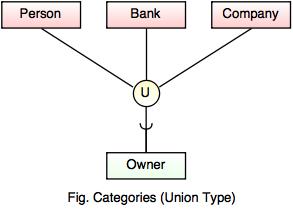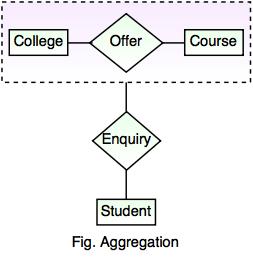Tutorialspoint Create An Er Diagram
Enhanced Entity Relationship Model (EER Model)
- « Previous
- Next »
EER Model
EER is a high-level data model that incorporates the extensions to the original ER model.
It is a diagrammatic technique for displaying the following concepts
- Sub Class and Super Class
- Specialization and Generalization
- Union or Category
- Aggregation
These concepts are used when the comes in EER schema and the resulting schema diagrams called as EER Diagrams.
Features of EER Model
- EER creates a design more accurate to database schemas.
- It reflects the data properties and constraints more precisely.
- It includes all modeling concepts of the ER model.
- Diagrammatic technique helps for displaying the EER schema.
- It includes the concept of specialization and generalization.
- It is used to represent a collection of objects that is union of objects of different of different entity types.
A. Sub Class and Super Class
- Sub class and Super class relationship leads the concept of Inheritance.
- The relationship between sub class and super class is denoted with
 symbol.
symbol.
1. Super Class
- Super class is an entity type that has a relationship with one or more subtypes.
- An entity cannot exist in database merely by being member of any super class.
For example: Shape super class is having sub groups as Square, Circle, Triangle.
2. Sub Class
- Sub class is a group of entities with unique attributes.
- Sub class inherits properties and attributes from its super class.
For example: Square, Circle, Triangle are the sub class of Shape super class.

B. Specialization and Generalization
1. Generalization
- Generalization is the process of generalizing the entities which contain the properties of all the generalized entities.
- It is a bottom approach, in which two lower level entities combine to form a higher level entity.
- Generalization is the reverse process of Specialization.
- It defines a general entity type from a set of specialized entity type.
- It minimizes the difference between the entities by identifying the common features.
For example:

In the above example, Tiger, Lion, Elephant can all be generalized as Animals.
2. Specialization
- Specialization is a process that defines a group entities which is divided into sub groups based on their characteristic.
- It is a top down approach, in which one higher entity can be broken down into two lower level entity.
- It maximizes the difference between the members of an entity by identifying the unique characteristic or attributes of each member.
- It defines one or more sub class for the super class and also forms the superclass/subclass relationship.
For example

In the above example, Employee can be specialized as Developer or Tester, based on what role they play in an Organization.
C. Category or Union
- Category represents a single super class or sub class relationship with more than one super class.
- It can be a total or partial participation.
For example Car booking, Car owner can be a person, a bank (holds a possession on a Car) or a company. Category (sub class) → Owner is a subset of the union of the three super classes → Company, Bank, and Person. A Category member must exist in at least one of its super classes.

D. Aggregation
- Aggregation is a process that represent a relationship between a whole object and its component parts.
- It abstracts a relationship between objects and viewing the relationship as an object.
- It is a process when two entity is treated as a single entity.

In the above example, the relation between College and Course is acting as an Entity in Relation with Student.
- « Previous
- Next »
Source: https://www.tutorialride.com/dbms/enhanced-entity-relationship-model-eer-model.htm
Posted by: carlitallise0194267.blogspot.com
Post a Comment for "Tutorialspoint Create An Er Diagram"